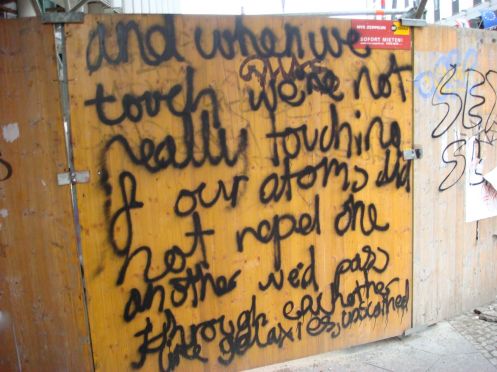
The great Caltech physicist Richard Feynman once observed that if you had to reduce scientific history to one important statement it would be: 'All things are made of atoms.' They are everywhere and they constitute everything. Not just the solid things like walls and tables and sofas, but the air in between. And they are there in numbers that you really cannot conceive.
Because they are so long-lived, atoms really get around. Every atom you possess has almost certainly passed through several stars and been part of millions of organisms on its way to becoming you. When we die, our atoms will disassemble and move off to find new uses elsewhere as part of a leaf or other human being or drop of dew. Above all, atoms are tiny , very tiny indeed. Half a million of them lined up shoulder to shoulder could hide behind a human hair.
By the early twentieth century it was known that atoms were made of parts but it wasn't known how many parts there were or how they fitted together or what shape they took. Rutherford was born in New Zealand, but in 1895 he won a scholarship that took him to the Cavendish Laboratory at Cambridge University, which was about to become the hottest place in the world to do physics.
In 1910, Rutherford (assisted by his student Hans Geiger) fired ionized helium atoms, or alpha particles, at a sheet of gold foil. To Rutherford's astonishment, some of the particles bounced back. This was just not supposed to happen. After considerable reflection he realized there could be only one possible explanation: the particles that bounced back were striking something small and dense at the heart of the atom, while the other particles sailed through unimpeded. An atom, Rutherford realized, was mostly empty space, with a very dense nucleus at the centre. This presented one immediate problem. By all the laws of conventional physics, atoms shouldn't therefore exist.
Let us pause for a moment and consider the structure of the atom as we know it now. Every atom is made from three kinds of elementary particles: protons, which have a positive electrical charge; electrons, which have a negative electrical charge; and neutrons, which have no charge. Protons and neutrons are packed into the nucleus, while electrons spin around outside. The number of protons is what gives an atom its chemical identity. An atom with one proton is an atom of hydrogen, one with two protons is helium, with three protons is lithium, and so on up the scale. Each time you add a proton you get a new element. Neutrons and protons occupy the atom's nucleus. The nucleus of an atom is tiny - only one-millionth of a billionth of the full volume of the atom - but fantastically dense, since it contains virtually all the atom's mass. As William H.Cropper has put it in his book ‘Great Physicists’, if an atom were expanded to the size of a cathedral, the nucleus would be only about the size of a fly - but a fly many thousands of times heavier than the cathedral.
It was this spaciousness - this resounding , unexpected roominess that had Rutherford scratching his head in 1910. It is still a fairly astounding notion to consider that atoms are mostly empty space, and that the solidity we experience all around us is an illusion. When two objects come together in the real world - billiard balls are most often used for illustration - they don't actually strike each other. 'Rather,' as science author Timothy Ferris explains, 'the negatively charged fields of the two balls repel each other, Were it not for their electrical charges they could, like galaxies, pass right through each other unscathed .' When you sit in a chair, you are not actually sitting there, but levitating above it at a height of one angstrom (a hundred millionth of a centimetre), your electrons and its electrons implacably opposed to any closer intimacy.












THANKS A LOT!!! I´ve been in Berlin last week. I saw that graffiti and it stayed in my mind since there. I didnt get any picture of it. Thank you very much for the picture!!
ReplyDelete